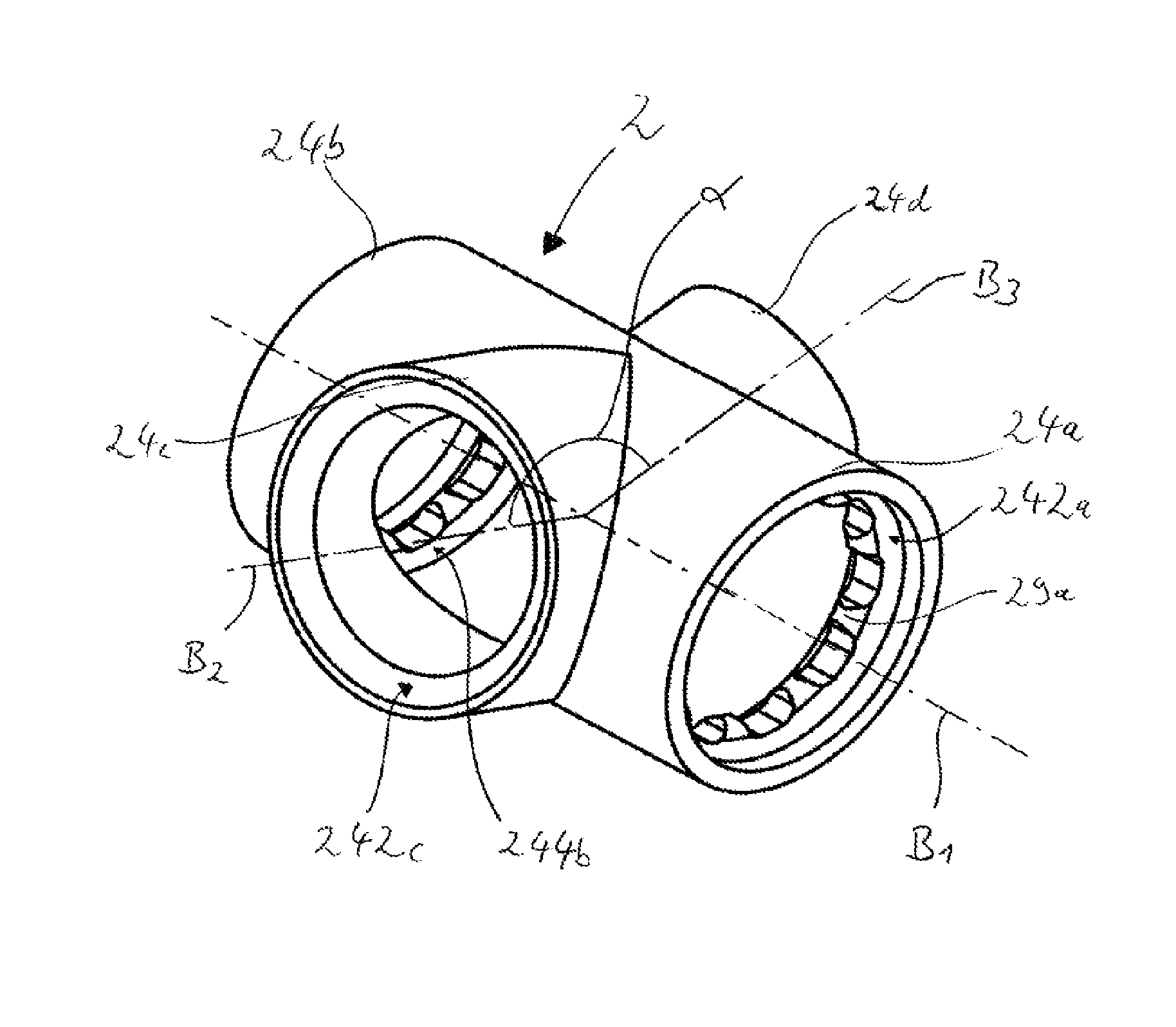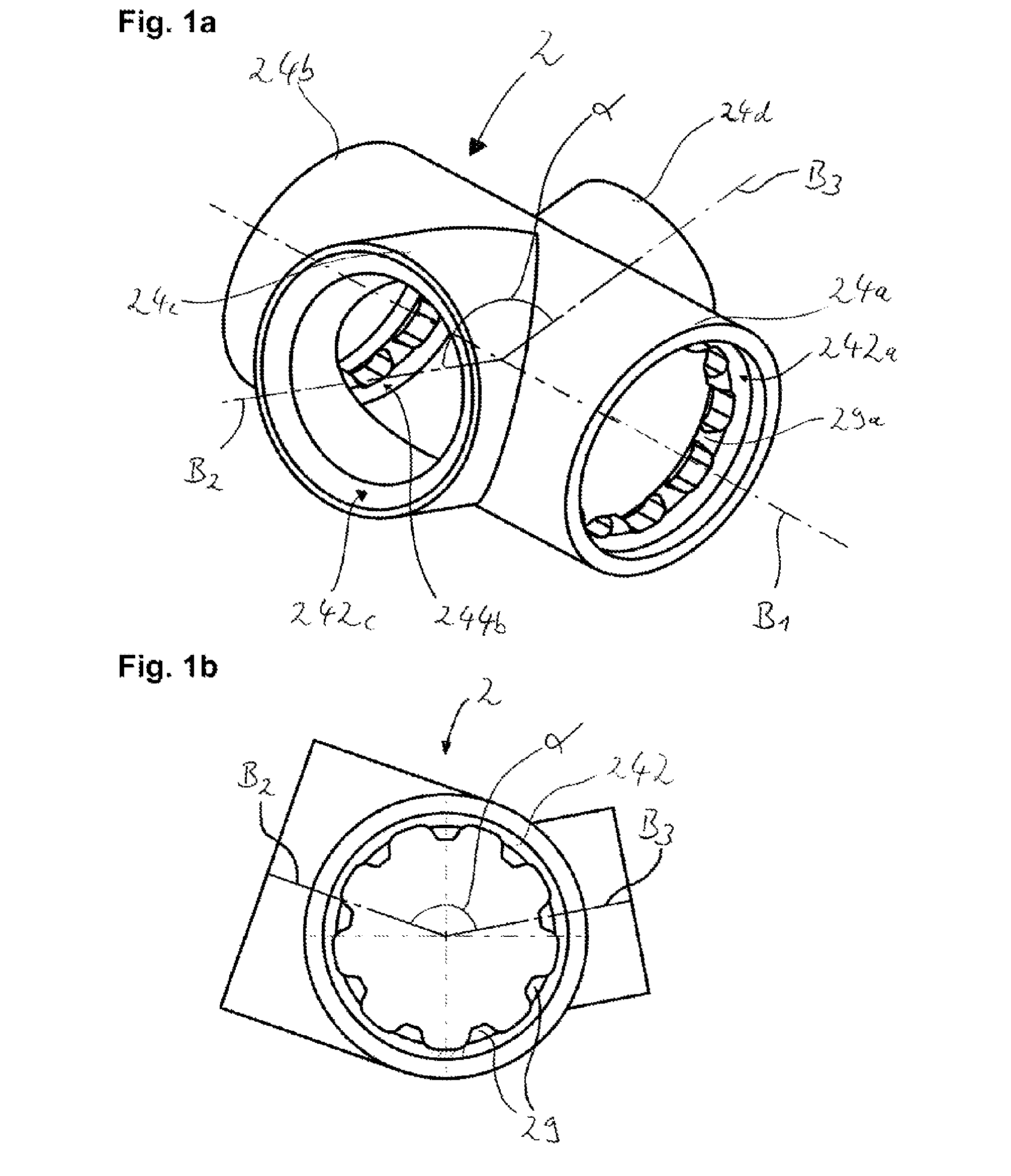Axle link coupling unit
a technology of axle link and coupling unit, which is applied in the direction of interconnection systems, resilient suspensions, vehicle components, etc., can solve the problems of reduced service life of the axle system as a whole, reduced geometrical design and high geometrical complexity of the longitudinal link or the axle link. , to achieve the effect of increasing the geometrical moment of inertia, preventing local stress peak, and increasing the weight of the axle link junction uni
- Summary
- Abstract
- Description
- Claims
- Application Information
AI Technical Summary
Benefits of technology
Problems solved by technology
Method used
Image
Examples
Embodiment Construction
[0028]FIGS. 1a, 1b and 1c show different views of a first preferred embodiment of the axle link junction unit 2 according to the invention. It can be seen from the perspective view in FIG. 1a that the axle link junction unit has two, preferably four, attachment sections 24a, 24b, 24c and 24d. Below, geometries assigned to respective individual attachment sections, such as for example the abutment surface 242, will be assigned to one of the corresponding attachment sections 24 (a-d, . . . ) by way of the respectively corresponding letters a, b, c, . . . . The first attachment section 24a and the second attachment section 24b are preferably of rotationally symmetrical form, or substantially rotationally symmetrical form, about the first attachment axis B1. The third attachment section 24c is of substantially rotationally symmetrical form about the second attachment axis B2, and the fourth attachment section 24d is preferably of rotationally symmetrical form about the third attachment ...
PUM
 Login to View More
Login to View More Abstract
Description
Claims
Application Information
 Login to View More
Login to View More - R&D
- Intellectual Property
- Life Sciences
- Materials
- Tech Scout
- Unparalleled Data Quality
- Higher Quality Content
- 60% Fewer Hallucinations
Browse by: Latest US Patents, China's latest patents, Technical Efficacy Thesaurus, Application Domain, Technology Topic, Popular Technical Reports.
© 2025 PatSnap. All rights reserved.Legal|Privacy policy|Modern Slavery Act Transparency Statement|Sitemap|About US| Contact US: help@patsnap.com



